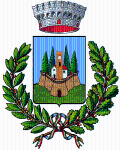Descrizione
Pieve fra le più antiche del Chianti, della quale si hanno le prime notizie già nell’anno 1086.
Oggi è un borgo che prende nome dalla sua antica Pieve prima dedicata a Santa Maria (sito Sciata-anno 1086) e poi a San Giovanni. La cronologia dei paramenti murari è diversificata: nel fianco sinistro si riscontrano datazioni altomedievali (VIII/XI secolo) mentre la torre campanaria si fa risalire al XIII secolo; altri importanti interventi, in particolare sugli interni, sono avvenuti nel 1748.
La trasformazione della Pieve in struttura fortificata, come tuttora è possibile apprezzare, avviene dopo il 1229, quando la sua posizione di confine la vide coinvolta nello scontro fra senesi e fiorentini e nell’occasione fu saccheggiata ed arsa. Oltre alla torre campanaria ne sorse un’altra e si realizzò un torrione/cassero sull’angolo SE, oltre ad una cinta muraria che ancora oggi definisce una corte. Nel 1260 vi si accamparono i fiorentini prima della battaglia di Montaperti e non sono pochi coloro che ritengono questo il luogo dello scontro decisivo poi trasformatosi in scempio nella piana dell’Arbia e della Malena.
Nel 1318 un documento ci ricorda che la pieve era già intitolata a San Giovanni Battista, difatti è scritto: “ Plebs S. Iohannis Asciate”possiede “ terram cum domibus in villa Asciate” e che esisteva un villaggio di Asciata: difatti proprio il catasto senese del tempo vi censisce 5 case.
Già nel XV secolo Pievasciata si univa a Selvole formando un comunello unico che ritroveremo anche alla fine del XVII: in questo caso è segnalato un podere Pieve descritto di proprietà del Pieve di Selvoli e della Pieve Asciata, oltre ad un altro definito Osteria e di incerto riconoscimento. In quegli anni il comunello aveva una estensione territoriale di circa 11 kmq e poteva contare su 160 abitanti di cui 96 femmine, distribuiti su molteplici poderi.
Nel catasto di inizio XIX secolo la Pieve non aveva l’attuale chiusura del chiostro dalla parte sud ovest lato campanile, mentre si registra un modesto incremento di superficie verso nord (fronte strada) e il podere Pieve si trovava inglobato nella struttura. Sempre ad inizio 800’ il borgo è definito Fattoria di Pieveasciata
English version:
One of the oldest in Chianti, the village has been documented since 1086.
The burg takes its name from its ancient Pieve (parish church), initially dedicated to Santa Maria (sito Sciata-anno 1086) and then to San Giovanni. The chronology of the walls is varied: on the left side we find early medieval sections (8th/9th century), while the bell tower dates to the 13th century, and significant modifications, especially to the interior, were carried out in 1748.
The transformation of the Parish church into a fortified structure, as we can now perceive, took place after 1229, when its border location saw it involved in a clash between the Sienese and the Florentines in which it was sacked and burned. Afterwards, a second bell tower was erected and a turret/keep was built on the SE corner, as well as a ring wall that still today surrounds a courtyard. In 1260 the Florentines set up camp here before the battle of Montaperti, and more than a few people maintain that this is the site of the decisive clash that became a massacre on the plain between the Arbia and the Malena.
A document from 1318 tells us that the church was then already dedicated to San Giovanni Battista, indicating: “Plebs S. Iohannis Asciate” possessed “terram cum domibus in villa Asciate” and that there was a village of Asciata; the Sienese land registry at that time recorded 5 houses there.
In the 15th century, Pievasciata joined with Selvole to form a single common, which we also find mentioned at the end of the 17th century; in this case, a Pieve farm owned by the Pieve di Selvoli and the Pieve Asciata is described, as well as another called Osteria, the identification of which is uncertain. In those years, the common covered a territory of about 11 sq. km. and had 160 inhabitants, 96 of them women, distributed over several farms.
In the early 19th-century land registry, the Pieve cloister was not closed on the southwest belltower side as it is now, while there was a modest increase in surface area to the north, on the side facing the road, and the Pieve farmhouse was incorporated into the structure. Around this time, the village came to be called “Pieveasciata Farm”.
Modalità d'accesso
sempre aperto
Indirizzo
Punti di contatto
Ultimo aggiornamento: 4 marzo 2024, 12:43

